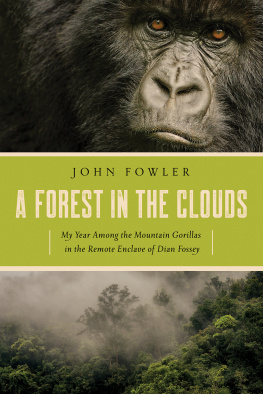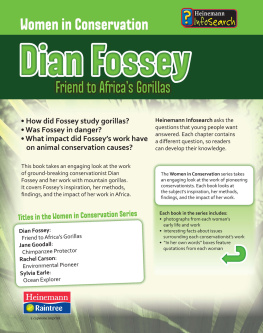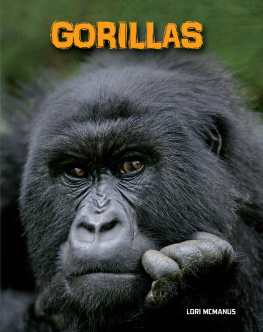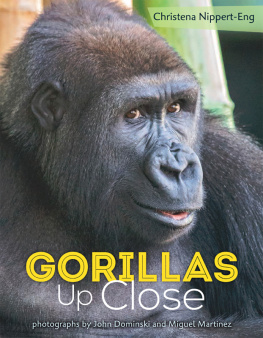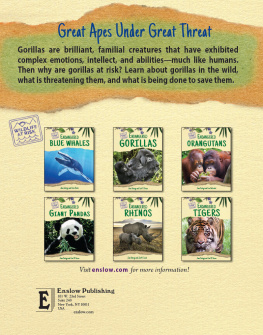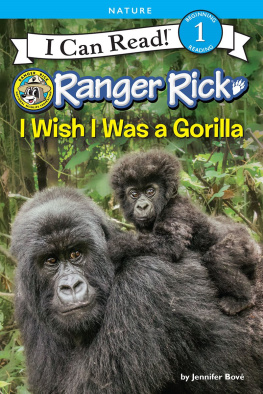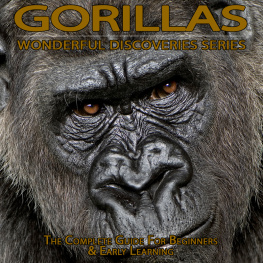
A FOREST IN THE CLOUDS
My Year Among the Mountain Gorillas in the Remote Enclave of Dian Fossey
JOHN FOWLER

A Forest in the Clouds
Pegasus Books Ltd.
148 W 37th Street, 13th Floor
New York, NY 10018
Copyright 2018 by John Fowler
First Pegasus Books cloth edition February 2018
Interior design by Maria Fernandez
All photographs copyright John Fowler unless otherwise noted
All rights reserved. No part of this book may be reproduced in whole or in part without written permission from the publisher, except by reviewers who may quote brief excerpts in connection with a review in a newspaper, magazine, or electronic publication; nor may any part of this book be reproduced, stored in a retrieval system, or transmitted in any form or by any means electronic, mechanical, photocopying, recording, or other, without written permission from the publisher.
Library of Congress Cataloging-in-Publication Data is available.
ISBN: 978-1-68177-633-0
ISBN: 978-1-68177-699-6 (e-book)
Distributed by W. W. Norton & Company
For Janet, Isabel and Ben
And for Mom and Dad
When I was about seven years old I knew I had to go to Africa, and, I also knew that I would write a book someday.
Dian Fossey
We live as we dreamalone.
While the dream disappears, the life continues painfully.
Joseph Conrad, Heart of Darkness
CONTENTS
D ian Fossey was found murdered at Karisoke Research Center, in Rwanda, Africa, on December 27, 1985. At forty-eight years old, the once statuesque and commanding mountain gorilla behaviorist had become battle-weary, all but defeated in her long reign while struggling to hold on to her research camp, her mountain village, and the home she had created for herself through the years.
Along with chimpanzee research pioneer, Jane Goodall, in Tanzanias Gombe Reserve, and Birut Galdikas, who launched an orangutan research project in Borneo, Fossey was one of the legendary trio of primatologists sent into the wilds under the mentorship of anthropologist Louis Leakey. At the time, being women made their bold pioneering efforts alone in the wilds even more newsworthy. But Dian Fossey had embraced the isolation a little too much, perhaps, and the autocracy that came with life in the remote enclave of her own making had not shaped her in a positive way, nor refined her best qualities and her social skills. She still had to contend with humans, if only because she needed them.
Ultimately, what had originally been seen as her courage and determination would be viewed by many as too much counterproductive behavior and an exhaustion of resourcefulnessin essence, a sort-of overstaying of her welcome. Relationships with former allies in research and conservation had soured, but the regions precious mountain gorillas were far too important, and endangered, for others to watch idly from a distance. Relocating Dian out of the Virungas and into a most worthy academic position at Cornell University in Ithaca, New York, had been a tenuous, and delicately executed maneuver. But for none that followed in taking her position at Karisoke Research Center did the cold and lonely camp become their home. They came and went. Meanwhile, the call of the wildor the need to withdrawnever abated for Dian, and ultimately she made her way back.
On that morning, Dians longtime house-servant, Kanyaragana, made his usual trek up the narrow path through the research camp as dawn began to light the sky. Hours would pass before the sun could burn even a peek through the pervasive mists. As on any other morning in the mountain forest at ten thousand feet, it was damp and chilly, and as usual, Kanyaragana was there to make Dians coffee and reignite the fire in her woodstove that always burned out during the night.
Going to unlock Dians cabin door, Kanyaragana found it already unsecured, and ajar, entirely out of character for the Research Center director who always made sure, with good reason, her doors were secure at night and who often slept late. Once inside, Kanyaragana walked across fragments of broken glass from camp lanterns littering the floor, past living room furniture that had been upended and knocked about.
Venturing toward Dians bedroom, the faithful servant saw that this room, too, had been ransacked, with drawers and cupboards pulled open, books scattered across the floor. Dians lifeless form lay face up on the dingy grass matting, a large gash gaping across her wan face. She had been hacked to death, disfigured by the sharp blade of a panga , Africas two-foot long machete. It was kept saber-sharp for harvesting crops like sugar cane and bananas, or in these parts, by Rwandan camp staff, gorilla researchers, and animal poachers for cutting through the heavy green growth of the forests. Pangas also made handy weapons, and this savagery stood as a punctuation mark of hate and rage at the end of the famous primatologists tumultuous life.
I hadnt seen Dian in over five years at the time of her death, which caused quite a stir internationally. My coworkers at the Audubon Zoo in New Orleans knew that I had spent a year as her research assistant, but it was not a subject I discussed much. There were no short answers, after all, to their questions: What was it like? What was Dian like? I had found it difficult to relate to others expecting a happy, inspirational story. There were so many who admired the noble National Geographic image of Fossey as intrepid scientist nestled among a peaceful family of mountain gorillas, Gorilla beringei beringei , against the lush green backdrop of equatorial Africa. To not know Dian, was to love her. Up close, however, her flaws cast a long terrible shadow, over even her most impressive accomplishments.
Details of the murder scene were released: A hole had been cut in the sheet metal exterior wall of her bedroom. The entry was just like one that had been cut soon after my departure from there five years earlierto steal expensive sound recording equipment... by someone who knew it was there. I imagined the sound this must have made, the ripping and bending of sheet metal. It was preposterous that anyone couldve done this with a pistol-packing Dian just inside, only a few feet away. Impossible , drunk or sober. And she was at her meanest when she was drunk. It had to have been done after the murder, a diversionary tactic to look like a break-in. And that could only mean that the killer was allowed inside. It was chilling to think beyond this.
The ensuing news reports of Dians murder, combined with persistent questions of friends and acquaintances made me speculate. Who did do the actual killing? I soon learned that all staff that was present in camp at the time of the murder were arrested and thrown in jail. Over ensuing weeks, news trickled out that they were all released... all except Rwelekana. Why was he detained? I thought back to working side by side with this seasoned gorilla tracker... our conversations together, with the other staffers by the camps fire. Did Rwelekana differ from the others? Was he a little more independent than they? More aloof? Detached? Dian had once referred to this valued gorilla tracker as an ex-poacher. He denied it with a smile, but... Was there something I didnt know? I considered him one of the most intelligent of camp staffclever too perhaps. But still he had been devoted to Dian for years.... Why him? Why now?
The only non-African in camp with Dian when she was murdered was an American named Wayne McGuire. His photo in a news story showed an odd and scruffy character behind the thick lenses of his horn-rimmed glasses. His overgrown beard and unkempt hair looked the picture of a man gone bushlike Dian, too long in the forest. I found myself thinking, saying even, if anyone had even the smallest tendency to murder, Dian could sure bring it out of them. I didnt know McGuire, had never even met him, but it was natural to speculate any weird scenario, under the circumstances, upon seeing his solemn odd photo. He also looked exhausted.
Next page
